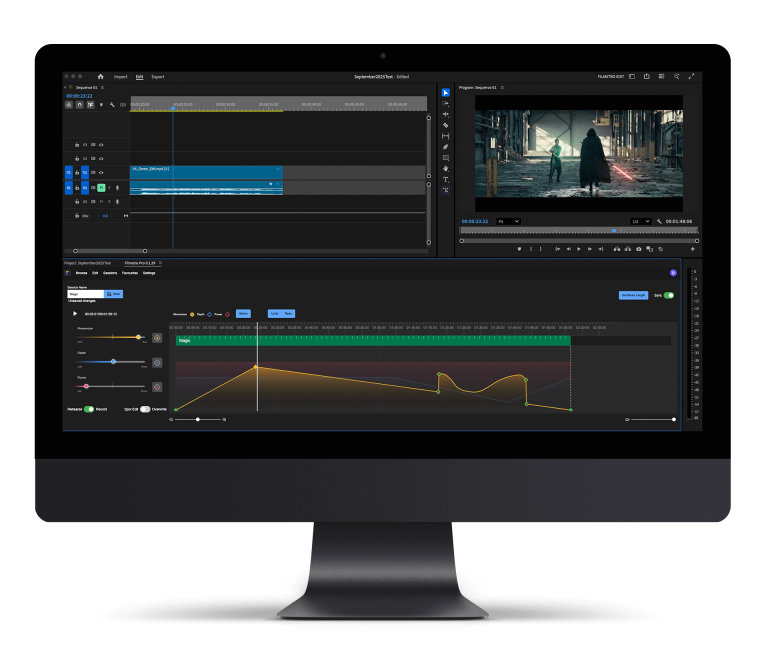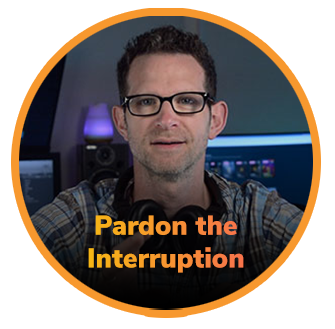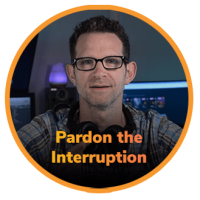Supporting a visual story with music is tough. Even professional composers don’t get it right. And why would they? After all, a composer is merely briefed by the film director in order to satisfy his or her vision of how the emotional content of each scene should be further enhanced by music. And so it’s often down to the discerning film director to think of music in terms of the mood that s/he wants to establish for each scene, which then needs to be communicated to the composer; something we’ll talk about in another article later down the line.
But what if you don’t have a composer working on your project? Well, you now need to find production music to mimic the way in which a composer approaches supporting a film, scene by scene.
Most narrative arcs have a constant repetition of three main elements. These are (1) the build up (2) the event itself and (3) the aftermath. Here’s how you can break that down and concentrate on meaningful chunks of your film to get closer to making your film music sound ‘composed’.
Build up
Try looking for music that makes you feel uncertain or slightly excited (think butterflies in your stomach – listen to our exciting royalty-free music). The music definitely needn’t be completely clear in terms of its emotional content, as that ambiguity will further lend itself to scenes in which we’re not sure what’s going to happen to the protagonist for example. Look for music that doesn’t necessarily have a strong identity in terms of making you think of a specific time and place. We don’t want the audience to associate too much with this music. Most music libraries unfortunately don’t let you search by scene or film genre (Filmstro being an excellent exception) but in most cases you will find a search bar that will scrape the catalogue for meta data, such as ‘tension’ or ‘build up’. While this will still not serve up the perfect piece immediately, it’s a good place to start.
Check out this little demo of a piece of music that builds up and sets an expectation of what is yet to come. We’re using the same piece incidentally to demonstrate all three of these stages by the way, so do check each subsequent demo to see if you can hear that they’re all the same. The only thing that’s changed in each piece is what a composer would change to make it suit the scene a little more. Things like ‘momentum’, ‘depth’ and ‘power’. The example we’ve chosen is a confrontation, so the build up is excitement brewing. The event is an actual battle scene or similar, and then the aftermath is a sad reflection on the loss that’s been caused.
Event
An important consideration in matching production music to your film is thinking about the synergy between one piece and another. If your build up piece was an orchestral piece for example and had an instrumental palette consisting of mainly strings with long held notes that created suspense (for example), then your choice for the actual event should be considered in that context. A complete shift into a completely different musical genre will strike the audience as too much of a shift and could jolt them out of your narrative. Remember that a soundtrack that is doing its job is one that you don’t really notice. It’s the silent hero in your production toolkit. Think colour grading as opposed to lens flare!
One way to ratchet up the pressure and make sure the ‘event’ is perceived as more significant than the build up is to cleverly use the beats per minute (BPM) and key to help you move your audience. For example, if your build up was in the key of C and had a BPM of 120, then by moving up ever so slightly to the key of C# or D, along with choosing a BPM of 130 or above, will significantly ‘move up’ the entire audio landscape.
Aftermath
The aftermath typically shows how the character(s) – and by extension the audience – feel after the event. This again could be a significant shift away from the event, so the music needs to really help set up the change of pace, scene and circumstance. Where the event moved things ‘up’ musically, the aftermath could take the opposite direction for example. Simply follow the above advice, but in reverse.
To see some of what we’ve covered in action, be sure to check out the following Full Cue in which we used Filmstro to score a short piece of music that has a distinct build up, event and aftermath. Notice how we actually only used one track to achieve all three distinct feels, in order to achieve an even more ‘composed’ feel overall.
To finish off, have a listen of how a composer would approach writing seamlessly from one part to the next. Here we’ve used Filmstro to create the same effect by changing the music in real time.









